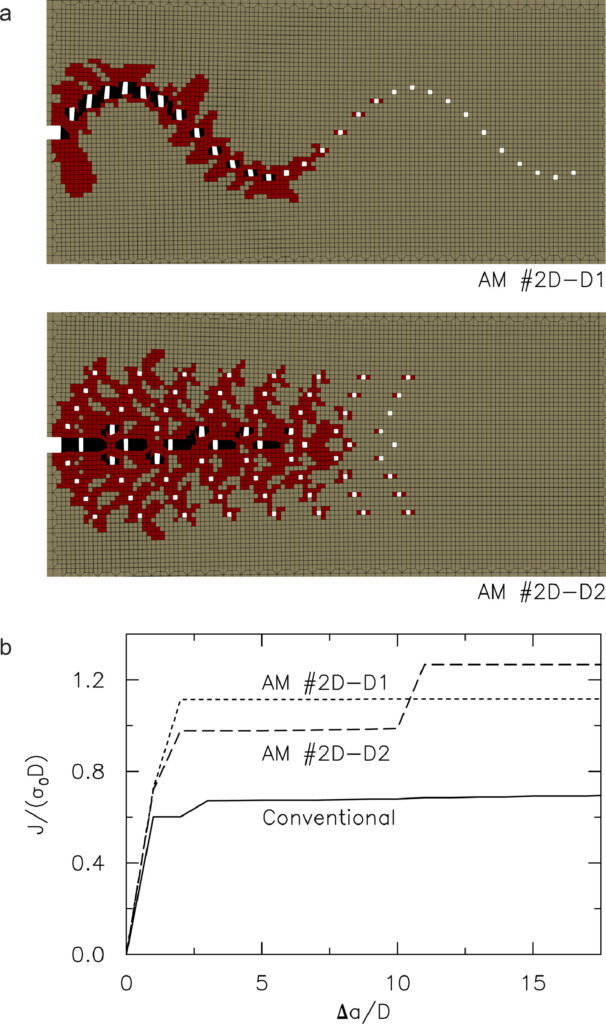Enhancing material fracture resistance in additively manufactured metals
Additively manufactured (AM) metals are revolutionizing the metal-forming industry. The freeform fabrication possible through additive manufacturing allows for complex component designs often not easily achievable with traditional manufacturing methods.
We seek to take advantage of this novel manufacturing process to further enhance material failure behavior and property by taking advantage of the voids that existed within the material microstructures.
In particular, microstructures with two distinct size scales of voids are commonplace in additively-manufactured metals. The smaller-scale voids nucleate from inclusions within the metal, while the larger-scale voids originate from unsintered powder particles. For this project, we want to understand more about the effects of these voids on fracture resistance and toughness on AM alloys. We could then design the material with superior fracture resistance over conventional alloys by harnessing these crack-defect interactions by strategic void placement.
CURRENT WORK: With the knowledge we learnt from our previous work, we are utilizing machine learning to design our material with desirable fracture resistance properties.
PREVIOUS WORK:

We now have a strong understanding of the interaction field and the damage mechanisms between the duo porosity scales for plane strain, plane stress, and 3D model. With certain positions and frequencies of these void clusters, the fracture toughness, and energy dissipation of such strategic AM material can be significantly increased over conventional metals.

